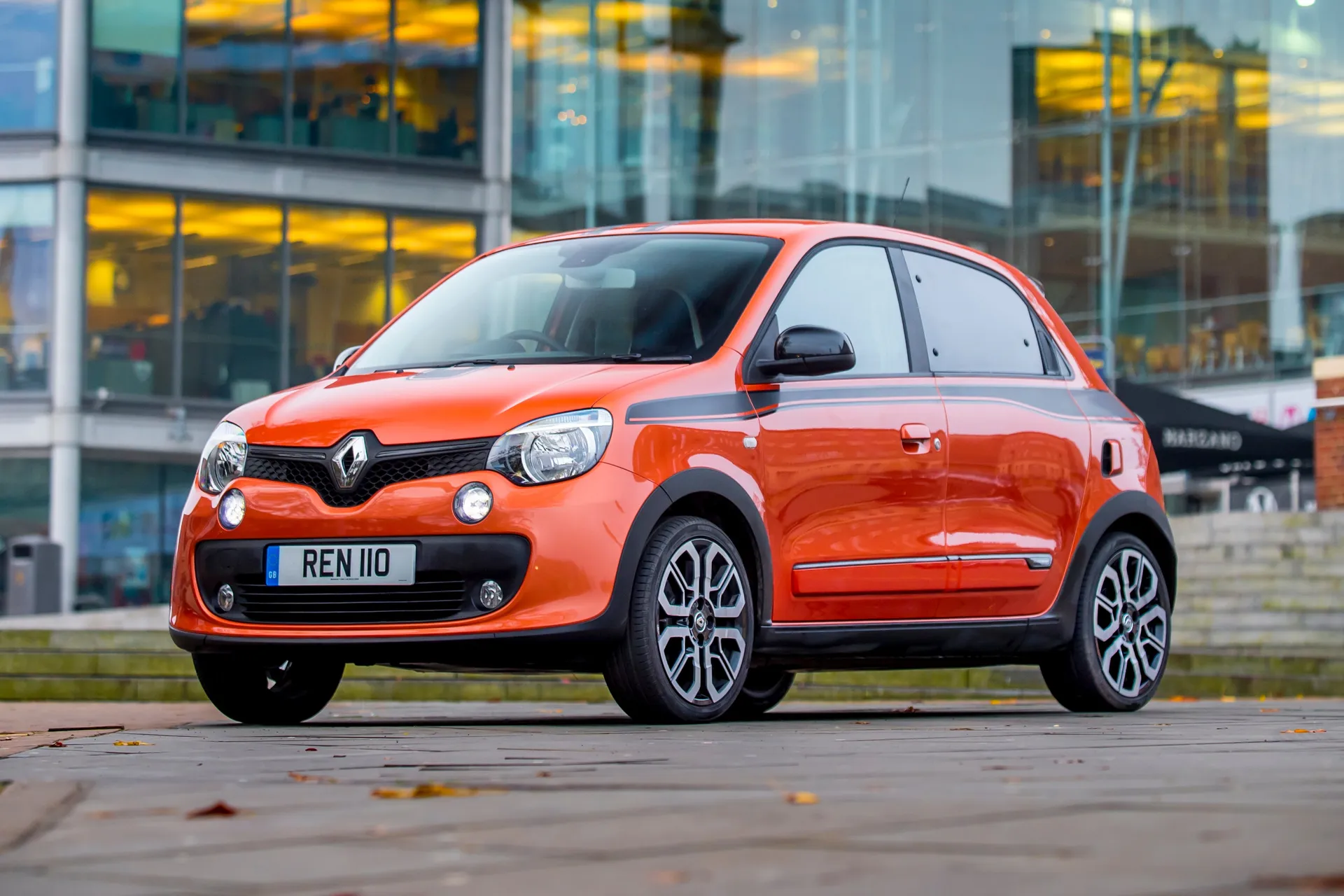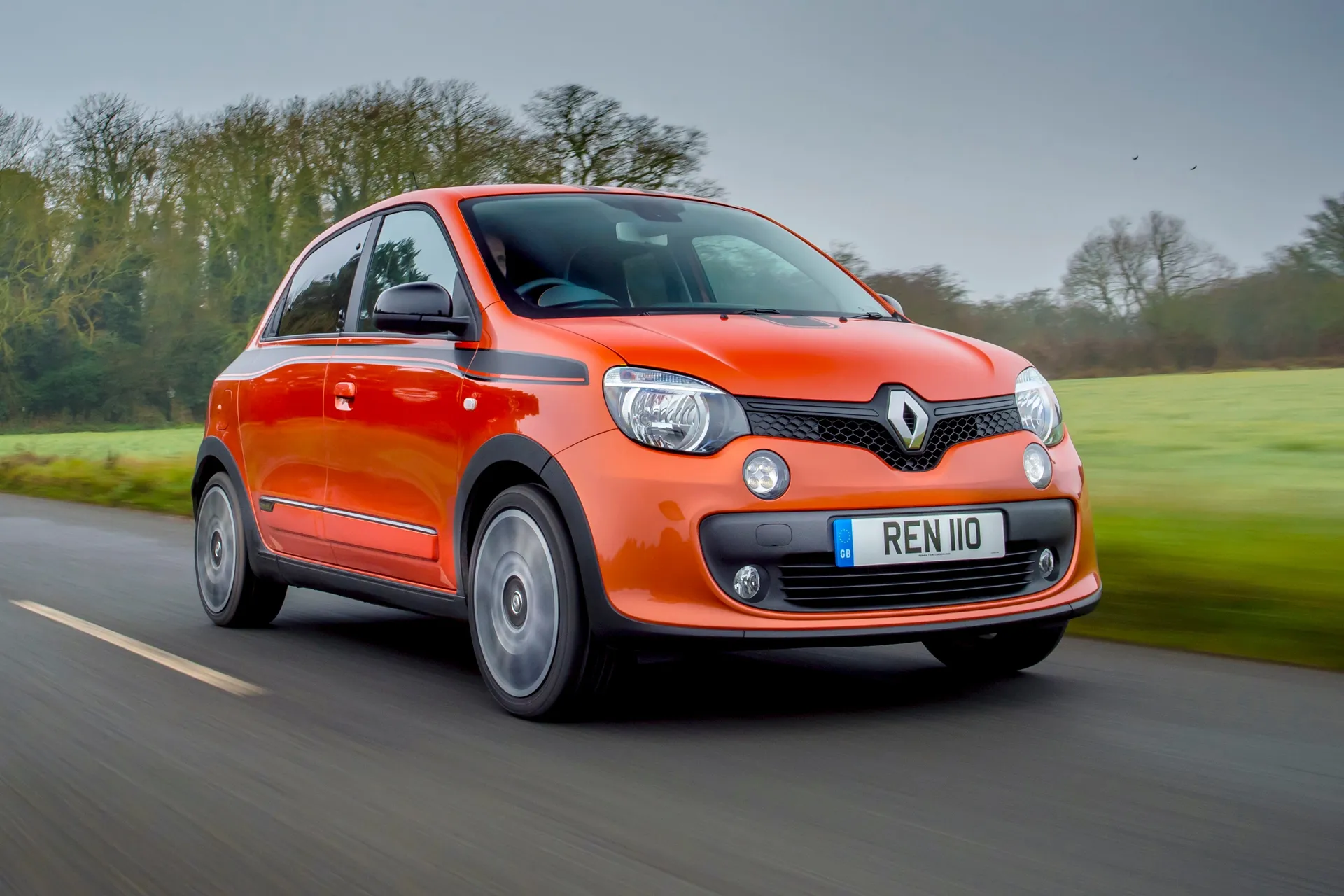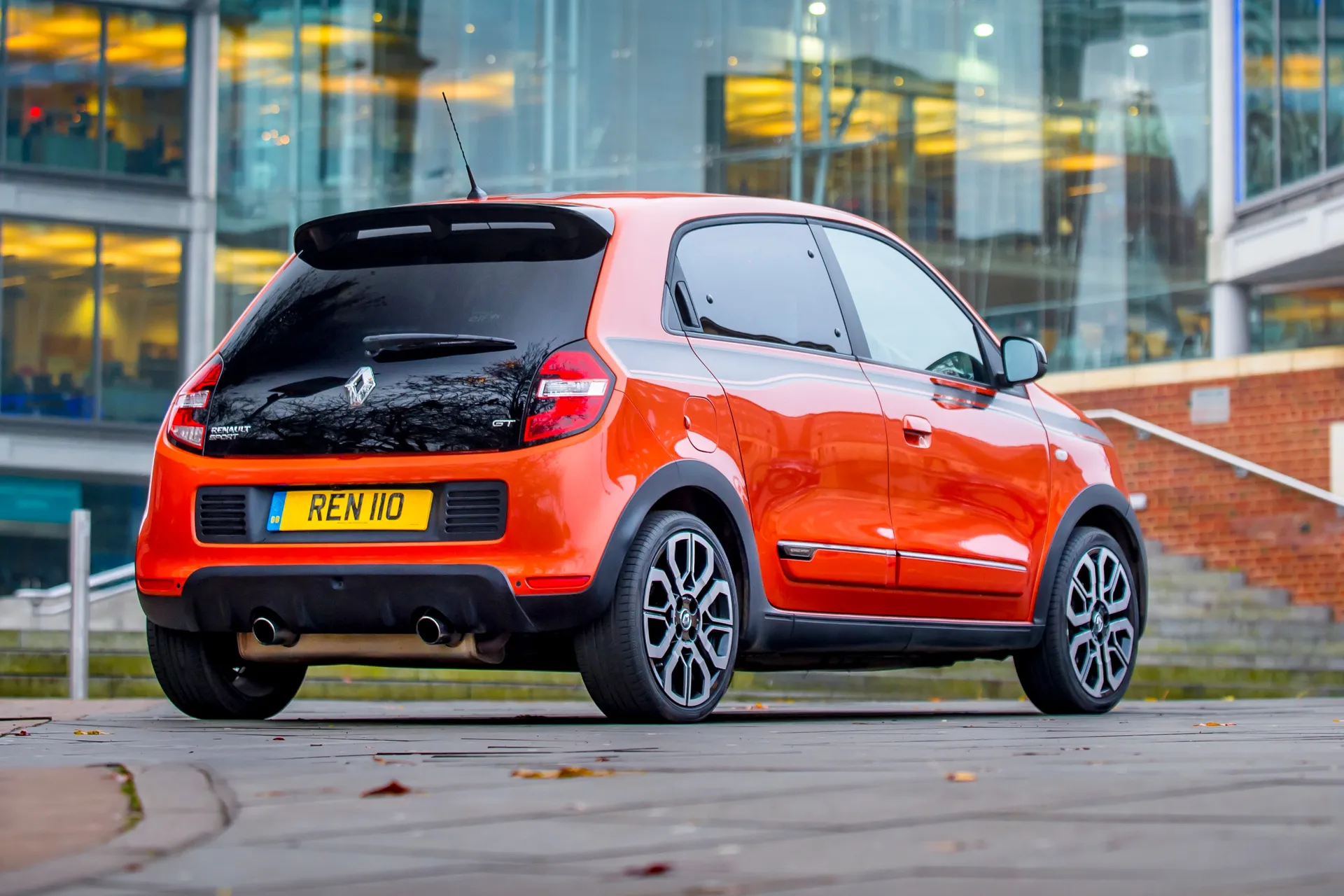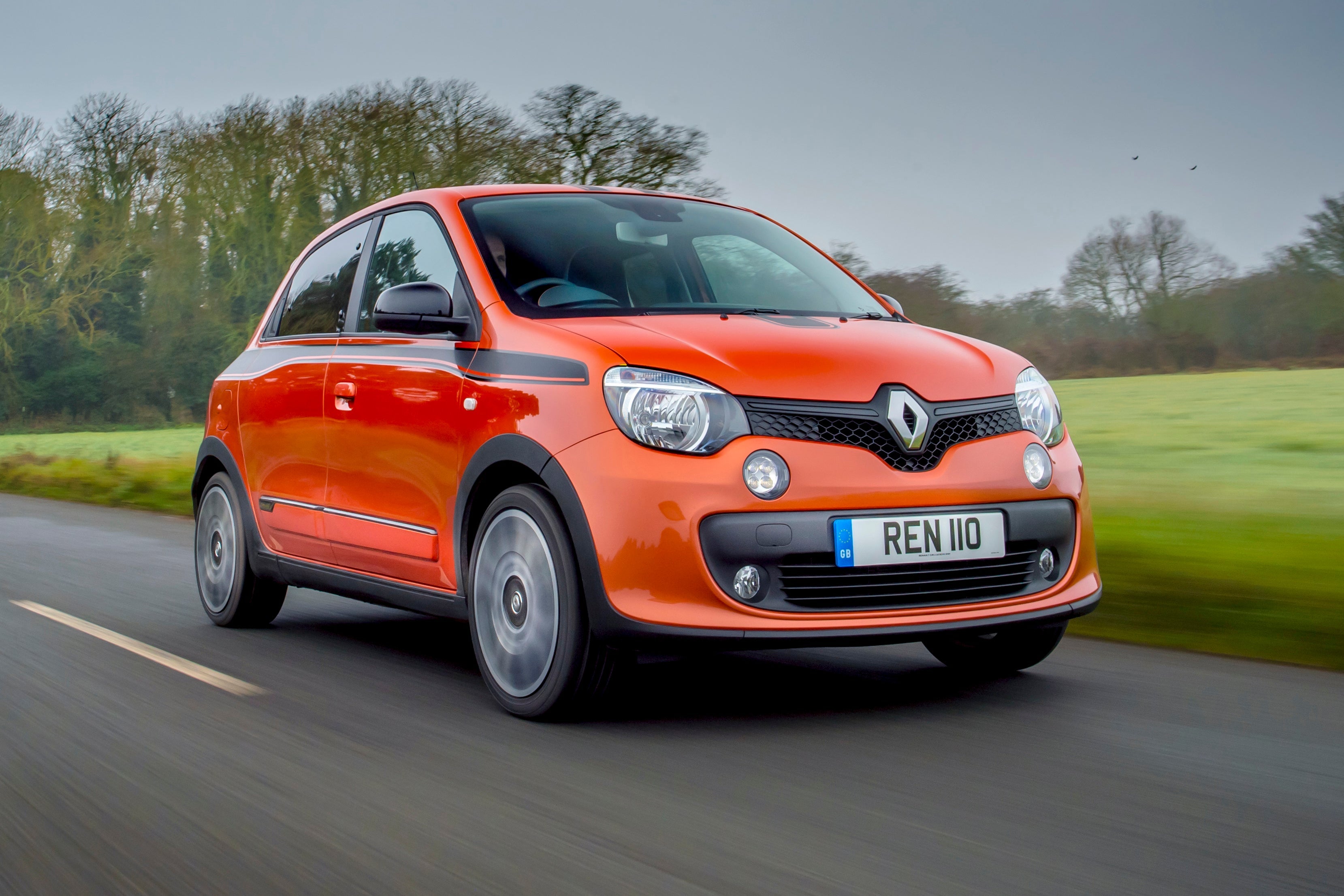Renault Twingo (2014-2019) Review
Quick overview
Pros
- Compact and manoeuvrable in tight spaces
- Good standard specification
- Cute looks
Cons
- Noise levels increase significantly at higher speeds
- Taller drivers may struggle to get comfortable
- Boot relatively small with rear seats in place
Overall verdict on the Renault Twingo
"In this Renault Twingo review we are looking at a unusual take on the supermini template that threw out the playbook for this type of car and went with something very different. Putting the engine in the rear and driving the rear wheels goes against almost every small car made since the 1960s, with the aim of providing space efficiency with a very small footprint. Ultimately it's fair to say it wasn't a huge success, but the qualities of the Renault Twingo still shine through and it makes an interesting and appealing alternative to the default offerings in the small car segment."

Packaging is everything when it comes to the best city cars - just look at the original Mini as a prime example - because you have much less room to play with, but people still want to fit as much stuff in as possible. That’s why you tend to see more innovation at work when it comes to small cars, and why Reanult’s 2014 Twingo took a different approach.
Designed and built in collaboration with Smart, who also produced the mechanically-similar ForFour, the Renault Twingo took the unusual step of putting the engine at the rear of the car and driving the rear wheels, unlike the front-engine, front-wheel-drive approach of almost every other small car in existence. The theory is that you can package up the engine and drivetrain more efficiently at the rear of the car, leaving more space for passengers and letting the front wheels just do the steering.
It’s not remotely obvious that this is the case when you look at the Renault Twingo however, it just looks like a very small car. A cute one too, with very short overhangs, a friendly face and a tall but narrow body emphasising that this is a car designed to take up as little road space as possible while creating the most amount of space for people and luggage.
The Renault Twingo is available with two petrol engine options; a 900cc turbocharged unit and a 1.0-litre non-turbocharged alternative, both with three cylinders. The turbo unit might be smaller but packs a bigger punch, offering up 90PS and 135Nm of torque, while the 1.0-litre is the cheaper alternative with 70PS and only 91Nm of torque.
Most models are fitted with a five-speed manual gearbox, but a dual-clutch, six-speed automatic is available with the turbocharged engine. Renault also introduced a hotter GT model with 110PS, but the extra performance and cost makes it less viable as a true city car.
Inside the Renault Twingo’s unusual engine arrangement pays off, as the cabin is impressively spacious for a car so small. Four adults will fit in reasonable comfort, with good head and legroom up front and in the rear. One caveat is that the driver’s seat and steering wheel don’t have a large range of adjustment, so taller drivers may find themselves feeling a little jammed in. Boot space is 220 litres with all the seats in place but can be expanded to 980 litres with all the seats folded.
The Renault Twingo is available in five different trim levels, with Expression, Play, Dynamique, Dynamique S and GT. Standard equipment on all models includes LED daytime running lights, electrically adjustable and heated door mirrors, hill start assist, a speed limiter, DAB radio with Bluetooth, remote central locking and electric windows.
The Renault’s driving experience is definitely city-centric; the rear-engine arrangement means the front wheels can turn up to 45 degrees, providing a very tight turning circle that makes manoeuvring easy and parking a breeze. The turbocharged 0.9TCe engine is also at its best here, providing a useful surge of acceleration at low speeds. The Renault Twingo is less accomplished at higher speeds however, with noise levels increasing substantially and the lack of performance more obvious.
Overall the Renault Twingo is an interesting and fun take on the city car template. It does some things better than any rival, and really excels in the city, but it is less well-rounded and can feel a little out of its depth on the open road.
Looking for a used car for sale? We've got 100s of Renault Approved Used Cars for Sale for you to choose from, including a wide range of Renault Twingo cars for sale.
Is the Renault Twingo right for you?
The Renault Twingo might be the right car for you, but it does depend on how you plan to use it. If you plan to spend most of your time in the city or in town and frequently have to carry passengers, then the Renault Twingo will make a sound choice, offering plenty of space but making the most of its compact dimensions and being easy to park. If you frequently venture out of town or use the motorway a great deal, then you might be best to choose a more rounded city car.
What other cars are similar to the Renault Twingo?
Plenty of the usual suspects are in competition with the Renault Twingo, but it’s worth remembering the Smart ForFour that is the sister car to the Renault Twingo. With the same rear-engine arrangement it is impressively spacious, although model-for-model it tends to be more expensive than the equivalent Renault Twingo.
The SEAT Mii and Skoda Citigo are spin-offs of the Volkswagen Up and bring the solid engineering and efficiency you usually get, just with a smaller price tag than the Volkswagen version. Smart-looking and good to drive, both the Mii and Citigo are attractive options.
The Hyundai i10 is also a strong contender, and although the cheapest model is some way from the cheapest Citroen C1, it brings a quality feel and good specification.
Comfort and design: Renault Twingo interior
"It might not be able to pull off a true Tardis impression, but stepping into the Renault Twingo from outside does feel like stepping into a much bigger car."

There’s plenty of light in the cabin, the roofline is high and the low-set dash all contribute to the feeling of space, whether you’re sat up front or in the rear. A further plus is the colourful design of the cabin; there are flashes of coloured trim on the doors, steering wheel, dashboard and centre console, matched to the body colour on some versions, while the seat fabric also benefits from a dash of colour.
Less impressive are the seats themselves, particularly for the driver. Both front seats are relatively thin and are lacking lumbar support, meaning they can become uncomfortable on longer journeys. Taller drivers may also find the seat is set too high to get properly comfortable, with the low-set dashboard and small range of adjustment on the steering wheel. Choosing a higher-specification model that includes driver’s seat height adjustment is recommended.
Quality and finish
Modest expectations usually come as standard when buying a city car, but the Renault is better in this regard than you might expect. Like every car it is built to a price, but it does a good job of disguising what that price is. One of the simple ways in which it achieves this is by not having any exposed metal inside, where so many of its rivals do, even though there are body-coloured panels dotted around the cabin.
The Renault Twingo looks the part, but when you start to use the car the quality of the actual materials is a little more mixed. The seat fabric feels expensive and the leather on the steering wheel helps, but some of the plastics lower down in the cabin are clearly from the cheaper end of the scale. It’s small details, but things like the air vents and the lid of the central storage box feel a little flimsy. It gives the impression that it has been well constructed, but there is a question as to how some of the cheaper materials will fare over time.
Infotainment: Touchscreen, USB, nav and stereo in the Renault Twingo
There are two different infotainment systems available on the Renault Twingo, both of which have significant plus points. The good news is that all versions come with a DAB radio and Bluetooth, so you can make calls and stream music regardless of trim level.
In addition, most versions of the Renault Twingo are fitted with a universal smartphone cradle, allowing you to connect your phone to the car via USB. You can then download a specific Renault app called R&Go and through this you can use your phone as a sat-nav, control your streamed music through the car’s audio controls and even switch to an additional instrument display.
Alternatively there is the R-Link system, standard on later higher specification models but also available as an option. This is a more conventional system, with a 7-inch touchscreen to control everything including the TomTom-sourced navigation, DAB radio and audio streaming. While it’s nice to have the dedicated system if you have people hopping in and out of the driver’s seat all the time, the less-expensive R&Go system works well, so don’t feel you have to go for the rarer R-Link setup.
Space and practicality: Renault Twingo boot space
The whole reason for going to the effort of putting the engine in the rear instead of up front where everyone else (and almost every other Renault) does is to free up space in the cabin, and it’s almost immediately obvious that it’s worked.
This generation Renault Twingo is 10cm shorter than the previous front-engined model, yet it manages to offer a cabin that is 33cm longer, such is the space saved. The engine itself is mounted below the boot floor in the rear, housed behind a special panel so you can’t accidentally access it when going for your shopping.
That translates to a cabin that is one of the biggest in the class, despite the Renault Twingo not being the newest city car around. Whether you sit up front or in the rear, there is a good deal of legroom available even for taller passengers, while the headroom is also impressive, making the most of the tall body shape. It’s a shame that the front seats, in particular the driver’s seat, are set so high, as this can leave taller drivers feeling wedged under the dashboard despite the actual legroom on offer.
Despite your luggage sharing the rear of the car with the engine, the Renault Twingo offers 188 litres of luggage space with the rear seats in place, which is a little less than many of its rivals. You have the option to tilt the rear-seat backrest to 90 degrees to boost the space available to 219 litres, but that makes them largely unusable.
However you can fold the rear seats to give you 980 litres of space, and even fold the front passenger seat forward to swallow loads of up to 2.3m in length. Anyone hoping for a second ‘boot’ up front will be disappointed; the space is taken up with a crash structure and can’t be filled with your stuff.
Storage in the cabin is good too, with a stack of storage areas and some clever touches, like the removable bag instead of a glovebox and space under the rear seats, with 51 litres of space in total.
The Renault Twingo dimensions are 3595mm long, 1646mm wide and 1554mm tall.
Handling and ride quality: What is the Renault Twingo like to drive?
"Typically, rear-engined cars have very different handling characteristics to traditional front-engined, front-wheel-drive cars, partly because the distribution of weight is completely different but also because drive from the engine is being sent to the opposite end of the car. "

That might make the Renault Twingo seem like an intimidating proposition for an inexperienced driver, but the reality is that Renault has engineered out any semblance of it being tricky to drive.
A big part of the Renault Twingo’s impressive ability in the city is the super-tight turning circle. The absence of a big lump of metal in the nose means the front wheels can be turned up to 45 degrees, giving it a turning circle of 8.59 metres that will cut the number of three-point-turns you’ll need to do as well as making it much easier to get into parking spaces.
However, to avoid overly-keen drivers getting themselves into trouble the steering itself is low-geared; power steering means it is light, but it takes several turns to go from lock to lock. It doesn’t spoil the Renault Twingo’s driving experience, but it would be a more enjoyable car to drive if the steering wasn’t so deliberately slow.
Another side effect of the engine layout is that Renault has made the Renault Twingo’s suspension quite stiff, which has mixed results when it comes to the ride quality. Smaller imperfections are mostly filtered out, but over bigger lumps and bumps it tends to drop sharply into them and take a while to settle, which can be an irritation on longer journeys. The Renault Twingo is sufficiently accomplished to deal with most types of journey, but it is definitely at its best around town.
What engines and gearboxes are available in the Renault Twingo?
The cheapest engine option is the 1.0-litre three-cylinder unit, which offers 70PS and 91Nm of torque and is mated to a five-speed manual gearbox only.
That 70PS is pretty much the default standard output for the cheapest of city cars, but also like much of the competition its light weight - 864kg for the lightest versions - means that you can get away with such a modest output. The 1.0-litre Renault Twingo isn’t exactly fast though, not being able to crack 95mph and requiring significant use of the gears and lots of revs to make reasonable progress. It’s better in town where it doesn’t have to work as hard.
Significantly better is the 0.9-litre TCe engine, which might be 100cc smaller but has a turbo to make up for it. With 90PS but a more generous 135Nm of torque, the TCe engine is more capable at handling out-of-town driving, while the extra torque makes it quicker away from the traffic lights too.
There’s no real fuel consumption penalty for choosing the turbo option either; official consumption figures are 62.8mpg and 65.7mpg combined NEDC respectively, so although you’ll pay a little more up front it’s more economical and has lower CO2 emissions to go with it.
A third option is the higher-power 0.9-litre TCe engine found in the GT model, but while the extra performance is welcome this top-spec model is more expensive to buy in the first place.
The standard five-speed gearbox fitted to most versions of the Renault Twingo is adequate but not particularly pleasurable to use. The shift action is a bit vague and doesn’t really feel like it is connected to the rest of the car. The optional dual-clutch automatic works quite well, especially the lack of a clutch pedal gives the driver more space for their left foot, but finding one for sale may be a challenge.
Refinement and noise levels
Given that the engine is further away from you than it would be in a front-engined car, you’d be forgiven for thinking that the Renault Twingo would be an oasis of calm.
Sadly that’s not the case; the 0.9-litre engine is the better of the two options, only really getting raucous when revved hard, but the 1.0-litre is keen to protest most of the time, and requires you to work it harder more often too. Although both options settle down at a cruise, city driving rarely gives you much chance to sit at a steady speed and let the engine settle, so expect to be turning up the volume on the infotainment system often.
The rest of the car is short on refinement too. At lower speeds the Renault Twingo is acceptably quiet, but road noise begins to creep in at modest speeds and wind noise is also painfully apparent too often, which harms its usability outside of the city. If you’re keen or hardy then the sub-average refinement won’t be an issue, but it stops the Renault Twingo being as relaxing and fun to drive as it could be.
Safety equipment: How safe is the Renault Twingo?
Euro NCAP tested the Renault Twingo when it was first launched in 2014, and it scored a strong four-star result overall. It scored 78 per cent for adult protection and an impressive 81 per cent for child protection, and no doubt helped by the rear engine configuration it achieved 68 per cent for pedestrian mitigation. Euro NCAP also awarded the Renault Twingo 56 per cent for safety assist.
As standard, all Renault Twingo models are fitted with ESP, front, side and curtain airbags as well as seat belt pre-tensioners in the front seats only. A speed limiter is also fitted to all models, which is a useful safety feature even if it requires the driver to resist the temptation to turn it off, and hill start assist is also standard across the range.
What the Renault Twingo lacks is some of the more sophisticated active safety systems, neither fitted as standard or available as an option. Automatic emergency braking and traffic sign recognition and are not available on any trim level, with the sole safety upgrade being lane keeping assist as a cost option, and then only on Dynamique models and above.
All versions of the Renault Twingo are fitted with a tyre inflation kit as standard, while a space saver or full-size spare is not an option, which for some buyers may be something of a sticking point. The main issue is that there is nowhere for the extra wheel to go, as the space under the boot floor is taken by the engine.
MPG and fuel costs: What does a Renault Twingo cost to run?
Due to its age, the Renault Twingo’s official fuel consumption figures are under the old NEDC system, which means that even the thirstiest version - the sporty GT version - manages a handy 54.3mpg combined.

1.0-litre 70PS models offer a claimed 56.5mpg, but the same engine fitted with the stop/start system bumps that up to 67.3mpg, the most economical version in the range. Versions fitted with the 0.9-litre TCe engine claim 65.7mpg combined, and 58.9mpg with the automatic gearbox option.
In real-world driving all versions of the Renault Twingo should offer 40mpg in town and over 50mpg out of it, but either the 1.0-litre with stop/start or the 0.9-litre TCe engine should be top of your list.
How reliable is a Renault Twingo?
The Renault Twingo scored a middling 9.00 out of 10 for reliability in the HonestJohn.co.uk Satisfaction Survey, which is worse than some key rivals but pretty much a par score in respect of the rest of the Renault range. There have been some recalls of the Renault Twingo during its lifetime, so check any car you look at to make sure any required work has been carried out.
As a brand Renault finished a lowly 27th out of 30 manufacturers, only ahead of MINI, Vauxhall and Fiat.
Insurance groups and costs
Although there’s little difference in performance and equipment levels across the Renault Twingo range, the disparity between them in terms of insurance groups is somewhat surprising. All models fitted with the 0.9-litre TCe engine are classed in group 8, bar the more powerful GT model which is 11 - neither of which should be particularly expensive to insure.
However, the 1.0-litre models are rated lower still, with Play, Dynamique and Dynamique S trims placed into group 3, and the entry-level Expression model a lowly 2. The change in premium between the two extremes should not amount to a huge saving, but if your insurance costs are likely to be high it might be worth considering the cheapest option.
VED: What is the annual road tax on a Renault Twingo?
The Renault Twingo is another car that flirts around the magic 100g/km CO2 threshold depending on the model and the date of first registration, so it’s worth doing your homework before choosing a model and checking the classifieds. As an example, the basic 1.0-litre Expression will cost you £20 a year if it was registered before 1st May 2016, £30 if was registered before 1st April 2017 and £165 afterwards.
Pick of the range are the Dynamique and Dynamique S models - both engine options get stop/start as standard - and are VED-free if registered before 1st April 2017. Unfortunately, they cost £165 a year after that date, so you could save yourself a tidy sum by choosing a slightly older car.
How much should you be paying for a used Renault Twingo?
"This generation of Renault Twingo was not a massive sales success, so you won't find as many examples to choose from compared to some rivals. As new Renault Twingos officially went off sale in 2019, the latest versions are from that year, with a low mileage Dynamique model and the 0.9-litre TCe costing around £10,000."

At the other end of the scale, the earliest 2014 cars tend to be around the £4000 mark. Even these early cars tend to have relatively low mileages - we found a 2015 car with just 17,000 miles, so there are good examples even at the lower end of the price bracket.
Trim levels and standard equipment
The model structure for the Renault Twingo changed a little during its lifetime, but the basic Renault Twingo Expression remained a constant throughout, with the key features being DAB radio with Bluetooth, remote central locking and electric front windows. The Renault Twingo Play model is the bare minimum you should consider, adding the essential air conditioning and driver’s seat heigh adjustment and opening up the engine options.
The Renault Twingo Dynamique and Renault Twingo Dynamique S models add more style than any great substance, although they do bring stop/start, cruise control and alloy wheels. The Renault Twingo Iconic special edition adds the R-Link infotainment system, bigger alloys and its own colour scheme. We’d suggest the Play or Dynamique models as the pick of the range - higher spec models are nice but rarely worth the extra cash.
Ask the heycar experts: common questions
Is the Renault Twingo a good car?
Is the Renault Twingo discontinued?
How much does a Renault Twingo cost?
Get our latest advice, news and offers
Keep me updated by email with the latest advice, news and offers from heycar.
By submitting you agree to our privacy policy



